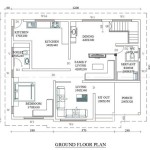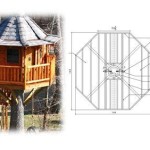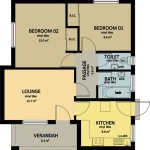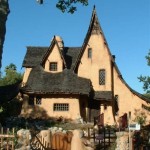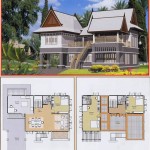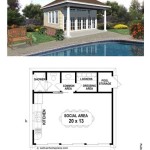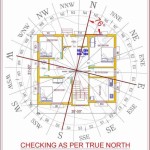Victorian Gothic Home Plans: A Guide to Architectural Opulence
Victorian Gothic Revival architecture, a prominent movement during the mid-19th century, sought to recapture the romanticism and grandeur of medieval Gothic styles. This architectural trend manifested in various building types, including domestic residences, resulting in distinct Victorian Gothic home plans. These plans are characterized by their emphasis on verticality, elaborate ornamentation, and a deliberate departure from the classical symmetry that dominated earlier architectural periods. Successful Victorian Gothic home plans require a careful balance between historical accuracy, modern functionality, and site suitability.
The Victorian era (1837-1901) witnessed significant social and technological advancements, influencing architectural design and construction. The Industrial Revolution provided new materials and techniques, enabling the creation of more complex and intricately detailed structures. The increasing wealth and social mobility of the middle class fueled a desire for homes that reflected their status and cultivated sensibilities. Gothic Revival architecture, with its association with established institutions, religious traditions, and aesthetic refinement, provided a fitting expression of these aspirations.
Victorian Gothic home plans are not merely replications of medieval buildings. They represent a reinterpretation of Gothic elements adapted to the specific needs and constraints of 19th-century domestic life. This resulted in a unique architectural vocabulary characterized by pointed arches, steep gables, ornate window tracery, and a general aspiration toward picturesque asymmetry.
Key Characteristics of Victorian Gothic Home Plans
Several defining features distinguish Victorian Gothic home plans from other architectural styles of the period. These characteristics contribute to the distinctive visual appeal and spatial organization of these residences.
Vertical Emphasis and Asymmetrical Design: One of the most prominent features of Victorian Gothic homes is their emphasis on verticality. Steeply pitched roofs, gables, and towers create a sense of height and grandeur. The asymmetrical design further enhances the picturesque quality of these homes. Unlike the symmetrical facades of classical or Georgian architecture, Victorian Gothic houses often feature irregular floor plans and varied rooflines. This deliberate asymmetry promotes visual interest and allows for a more organic integration of the building with its landscape.
The positioning of gables, bay windows, and entry porches is carefully considered to create a dynamic and visually engaging facade. The use of contrasting materials and textures further enhances this effect. High-pitched roofs are often adorned with decorative elements such as finials, cresting, and dormers. Towers, either integrated into the main structure or projecting as distinct elements, serve as prominent focal points and offer panoramic views. The overall effect is one of deliberate irregularity and carefully orchestrated visual complexity.
Elaborate Ornamentation: Victorian Gothic homes are renowned for their intricate ornamentation. This ornamentation serves not merely as decoration but as an integral part of the architectural expression. Common decorative elements include pointed arches, quatrefoil windows, window tracery, decorative bargeboards, and elaborate chimney stacks. The availability of mass-produced architectural components, made possible by the Industrial Revolution, enabled the widespread use of these decorative features.
Window tracery, often executed in stone or wood, is a hallmark of Gothic architecture and is frequently employed in Victorian Gothic homes. Decorative bargeboards, intricately carved and often painted in contrasting colors, adorn the edges of gables. Chimney stacks, typically constructed of brick or stone, are designed as sculptural elements, adding to the overall visual interest of the roofline. The selection and arrangement of these decorative elements are crucial to achieving an authentic and visually appealing Victorian Gothic aesthetic.
Use of Natural Materials: Victorian Gothic homes often feature natural materials such as stone, brick, and wood. These materials contribute to the sense of solidity, durability, and connection to the natural environment. Stone, especially in regions where it is readily available, is frequently used for foundations, walls, and decorative elements. Brick, available in a variety of colors and textures, provides another versatile building material. Wood is used for framing, siding, trim, and interior finishes.
The colors used in Victorian Gothic homes typically reflect the natural tones of the materials. Earthy browns, grays, greens, and reds are common choices. Contrasting colors are often used to highlight architectural details and decorative elements. The overall effect is one of warmth, richness, and visual harmony.
Considerations for Modern Victorian Gothic Home Plans
While Victorian Gothic architecture evokes a sense of historical charm and aesthetic refinement, modern interpretations must address contemporary living requirements and building codes. Several key considerations are relevant when designing Victorian Gothic home plans for the 21st century.
Integration of Modern Amenities: Victorian-era homes often lacked modern amenities such as central heating, air conditioning, and adequate plumbing and electrical systems. Modern Victorian Gothic home plans must seamlessly integrate these amenities without compromising the architectural integrity of the design. This requires careful planning and coordination between architects, engineers, and contractors.
Concealing ductwork, wiring, and plumbing within walls and ceilings is essential to maintaining the original aesthetic. Energy-efficient windows and insulation can improve thermal performance without detracting from the historical character of the building. The placement of modern appliances and fixtures must be carefully considered to minimize their visual impact.
Adaptation to Contemporary Lifestyles: Victorian homes typically featured smaller rooms and a more compartmentalized floor plan. Modern lifestyles often demand larger, more open living spaces. Victorian Gothic home plans must adapt to these needs while preserving the essential character of the architecture. This may involve reconfiguring interior walls, creating larger kitchens and family rooms, and incorporating open-plan layouts.
The design of bathrooms and kitchens is particularly important. While maintaining Victorian-era design elements such as clawfoot tubs and period-style cabinetry, modern bathrooms and kitchens must also incorporate contemporary fixtures and appliances. The integration of natural light is another important consideration. Victorian homes often had smaller windows, which can result in darker interiors. Modern Victorian Gothic home plans should maximize natural light through the use of larger windows, skylights, and strategically placed openings.
Compliance with Building Codes and Regulations: Modern building codes and regulations address safety, accessibility, and energy efficiency. Victorian Gothic home plans must comply with these codes to ensure the safety and well-being of occupants and the long-term durability of the building. This may require modifications to the original design, such as the addition of fire-resistant materials, accessible entryways, and energy-efficient systems.
Particular attention must be paid to structural integrity, fire safety, and accessibility. Modern building codes often require specific structural reinforcements to withstand seismic activity or high winds. Fire-resistant materials must be used in critical areas such as walls, floors, and roofs. Accessible entryways and bathrooms may be required to comply with accessibility standards.
The Enduring Appeal of Victorian Gothic Home Plans
The enduring appeal of Victorian Gothic home plans lies in their ability to evoke a sense of history, romance, and architectural grandeur. These homes represent a distinctive chapter in architectural history and offer a unique blend of aesthetic refinement and historical significance.
The intricate ornamentation, vertical emphasis, and picturesque asymmetry of Victorian Gothic architecture continue to captivate and inspire. Modern interpretations of these plans offer the opportunity to blend historical charm with contemporary living requirements, creating homes that are both beautiful and functional.
The creation of successful Victorian Gothic home plans requires a thorough understanding of architectural history, a keen eye for detail, and a commitment to quality craftsmanship. By carefully considering the key characteristics of the style, adapting to modern needs, and complying with building codes, it is possible to create Victorian Gothic homes that stand as enduring testaments to architectural excellence.

Gothic Revival House Plans Google Search Victorian Vintage Floor

Pin By Irene On Casas Victorian House Plans Blueprints Farmhouse Floor

Archi Maps Victorian House Plans Gothic Mansion Floor Plan

58 Best Gothic Floor Plans Ideas Vintage House

50 Victorian American Architecture House Designs Plans With S 100 Printable Pages Or Read On Your Tablet Computer Instant

Favorite House Plans Victorian Homes Gothic

House Plan 98568 Victorian Style With 3017 Sq Ft 4 Bed 3 Bath

Charming Gothic Revival Cottage 1204 Sq Ft Architectural Designs 43002pf House Plans

House Plan 95569 Victorian Style With 1832 Sq Ft 3 Bed 2 Bath

58 Best Gothic Floor Plans Ideas Vintage House

